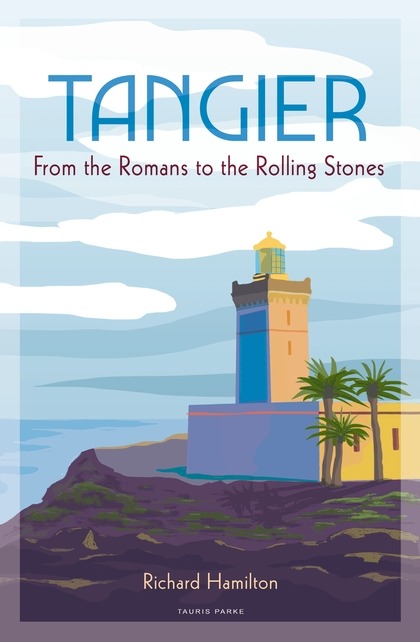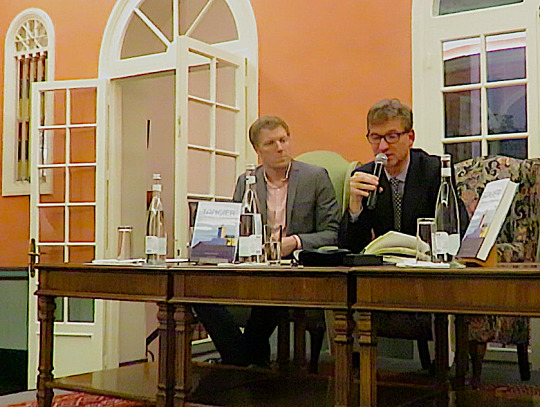#Tangier from the Romans to the Rolling Stones richard Hamilton williamsburroughs Kasbah petitsocco grandsocco hotelcontinental paulbowles
Explore tagged Tumblr posts
Text

The writer Richard Hamilton and former BBC correspondent for North Africa has published his second book on Morocco, ‘Tangier From the Romans to the Rolling Stones’. A mosaic of Tangerine history, anecdotes and vignettes describing Tangier through its eccentric inhabitants and renowned interlopers. A fascinating roll call of a city with a chequered past and a blossoming renaissance on the cards.
After reading the book and meeting Richard at the Moroccan launch at the American Legation in Tangier I wondered what does the somewhat obscure ‘El Muniria’ hotel in Tangier have in common with the infamous ‘Beat Hotel’ in Paris, where artists sought out freedom to experiment and create without censorship and then came to Tangier looking for the same?
Namely William S Burroughs, who wrote The Naked Lunch, Brion Gysin who invented the “Dream Machine’ (a kinetic artwork viewed with your eyes closed), also pioneering ‘the cut ups’ technique in Tangier and Harold Chapman the photographer who met them both and documented it all previously in Paris amongst an entire community of oddballs, poets, writers, artists, musicians, pimps, prostitutes, and anyone else you could imagine; thus mirroring the artists, atmosphere and adventures that had happened in Tangier and are recorded in Hamilton’s the book.
If I draw a quantum map from Deal in Kent (where Harold Chapman was born and lives today, once my tutor and mentor) to the Beat Hotel in Paris and then to the El Muniria in Tangier and back; a set cosmic of connections reveal themselves rather like a venn diagram of artistic intersections in time and space across cities and continents.
It seems that the after international heyday of Tangier the city fell into decline but is staging a comeback with native creative forces leading the way. Landmark buildings such as museums, hotels, cinemas are being restored to their former glory and the mood is upbeat bustling with energy and optimism.
Watch Richard here at the American Legation in Tangier describing the artist Brion Gysin and the Cut Up method click here https://vimeo.com/372179263

I pitched Richard a few questions and immediately grasped his deep affection for Tangier
· Can you describe your writing practice and how the book came together?
I don’t have a particular writing process that I adhere to, but the way I researched the book and the practical limitations of having to visit Tangier in short bursts (I have a job at the BBC and a young family in London) meant that I had to write in chunks followed by long spells of inactivity, self-doubt and writer’s block! I decided on a basic structure which involved a series of chronological biographies charting the history of the city. I therefore read a lot of books about the people I wanted to write about. Most of this element of the research was done in the UK, either in libraries or simply buying books about these people. Then I would go to Tangier and try to visit as many places where they had lived or visited. Another layer in this mixture was interviews with present day Tangerines.
· Which is your favourite anecdote in the book?
In his diaries, Kenneth Williams recalls a story about a man who was invited to a fancy dress party at the villa of a very rich British aristocrat who lived on the Old Mountain above Tangier. The guest decided to dress up as the Queen Mother. But when he knocked on the door, the butler said: “You can’t come in, she’s here already.”
· Tangier is charged with creative electricity, what are the elements that combine to make this energy bubble to the surface?
This is a difficult question to answer. The Moroccan writer Mohamed Choukri who came from Tangier said that in the city “everything is surreal and everything is possible.’ That pretty much sums it up. There are also two main quirks or oddities about Tangier. One is geographical. It is on a promontory between two seas: the Atlantic and the Mediterranean. This makes the light, which bounces off these two seas, incredibly clear. This aspect – that you also encounter in St Ives in Cornwall and Skagen in Dnemark – therefore attracted many artists; the most famous being Delacroix and Matisse. They found the light brought out the local colours so powerfully that for them it became a painter’s paradise. The second quirk is historical. Tangier was part of an International Zone from the 1920s to the late 1950s (because the Great Powers did not want any of their rivals to own it outright) and this meant that many people from many different countries came to the city and were able to do more or less whatever they wanted. They came to Tangier to escape from the constrictions of their more conservative home countries. So, for example, Paul Bowles and William Burroughs lived here because homosexuality was illegal in the US, whereas no one really cared what they got up to in Tangier. They also experimented with drugs. The result was that two of the most influential works of 20th century literature were born out of the same city in Morocco.
· It feels like Tangier is on a ley line of sorts as odd things always seem to be happening? Can you shed any light on this?
The Ancient Greeks believed that this region, the mouth of the Mediterranean, was the edge of the known world, and that ships would disappear here. There is also a sunken land mass near the lighthouse at Cap Spartel, which disappeared around 12,000 years ago, that some believe was the lost island of Atlantis. Paul Bowles said he was attracted to the city because he thought there was a sort of sub-stratum of witchcraft going on beneath the surface and that at night he could almost feel the spells being cast. He was also attracted to the night time sounds of dogs and frogs. I do find that Morocco in general is an odd place where strange coincidences seem to happen to me. Tangier seems to be a magnet for eccentrics and when strange things occur they often remark: “that’s so Tangier!”
· How does Tangier compare to other Moroccan cities?
Every Moroccan city is unique and I can’t really say that I have a favourite. Fez seems the most medieval and Marrakech is the most colourful. Rabat is relatively serene and hassle free. Tangier feels much more international because of the waves of invasions, conquests and migrations that have occurred throughout its history and it is more nuanced than some of the other cities. It is a city on the edge and a home for exiles and outsiders. A Moroccan writer who helped me research the book, Otmane Benchekroun, told me that ‘Tangier is like a woman who does not give herself easily to you.’ That is certainly my experience. It was not love at first sight but every time I go back there I love it more.
Tangier From the Romans to the Rolling Stones Richard Hamilton https://www.bloomsbury.com/uk/tangier-9781784533434/
More on Richard Hamilton http://www.richard-hamilton.com/
More on Harold Chapman https://peeperspuntersandpedants.tumblr.com/post/162469187096/harold-chapman-at-90-not-only-the-beat-hotel
#Tangier from the Romans to the Rolling Stones richard Hamilton williamsburroughs Kasbah petitsocco grandsocco hotelcontinental paulbowles#samuelpepys henrimatisse brianjones Ibnbattuta stfrancisofassisi mohamedchoukri briongysin cutups collage hotelminzah#road to morocco morrocanbound elmuniria dreammachine nakedlunch jimmysjetset cafehafa American Legation beathotelparis haroldchapman#writing artists photography history avant-garde anecdotes vignettes connections time space
1 note
·
View note